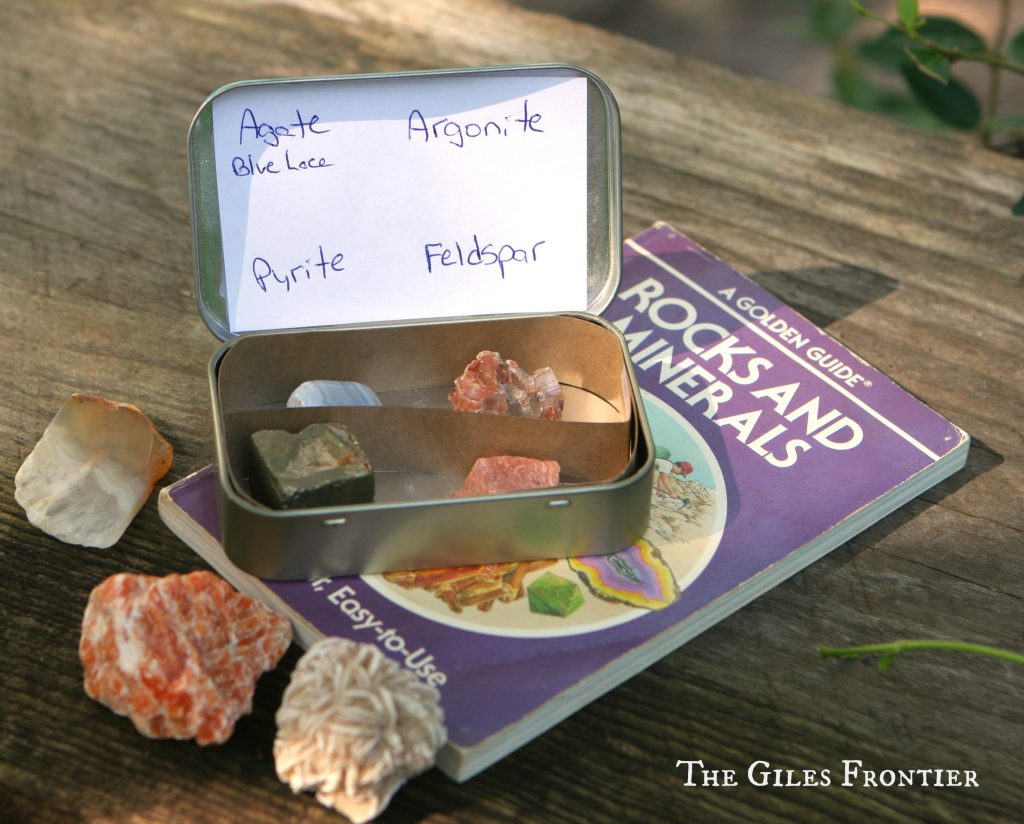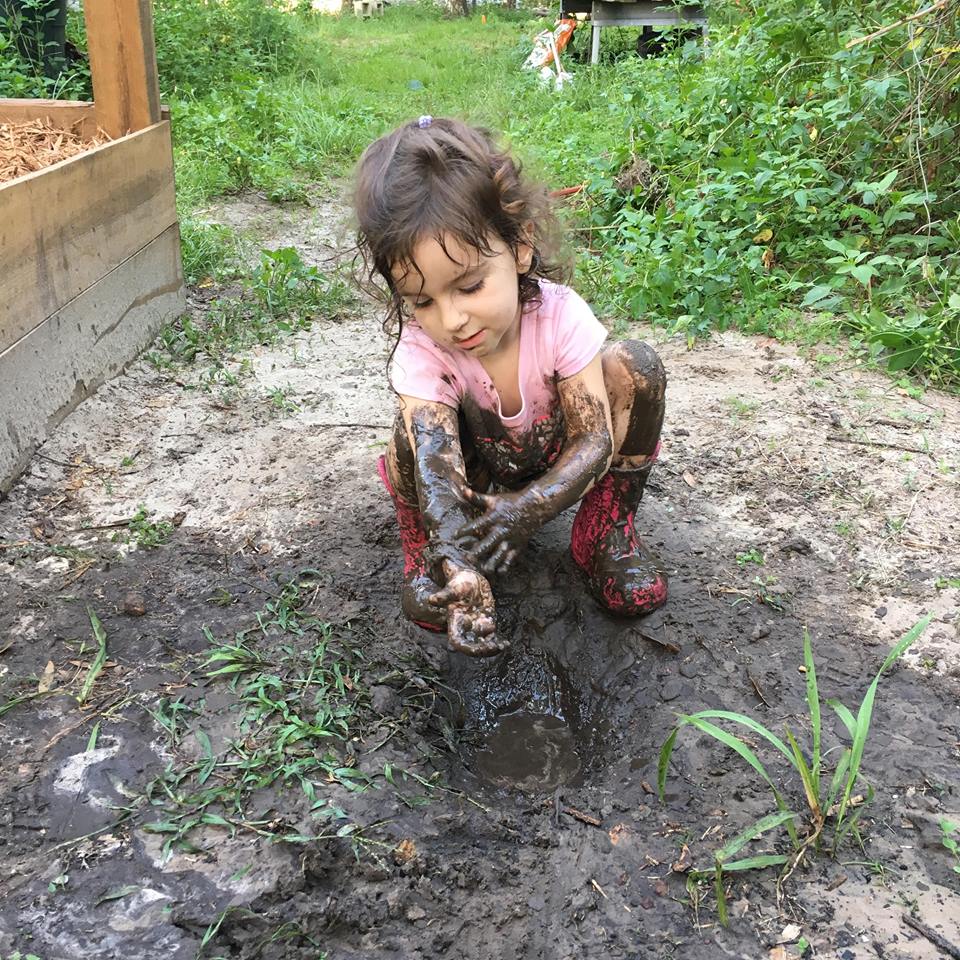Rock Collection Box:
Using an empty mint tin, shoe box or cardboard jewelry box, have your children create a collection box for their finds from the yard, nature walk or park visit. We used an Altoid Mint box, some cardstock paper for dividers and leftover pillow stuffing from the craft box for the bottom. We also made a legend in the lid of the names of the rocks.
Create your own town:
Using rocks, blocks, sticks or other found objects. Have each child build their portion of the town. Re-create Roxaboxen or make up your own town with new places to visit. This can be done inside your home or out in the backyard.
I found an interesting article about how Dutch children build an outdoor town each year. The article in resources below.
Mapping skills:
This is a great time to take a look at a real map. Perhaps your city or town has its own map. Have your children locate your street, then give them other streets to locate they are familiar with. Mapping is still an important skill to have even though we rely on virtual maps and google to get us where we want to go.
Try the mapping worksheet from education.com. It can help teach coordinates for elementary ages. The link is in resources below.
Sensory Play:
Most children love sensory bins as it activates the nervous system and gives them a “feel good” sensation. We use small plastic containers with lids, shoe bin size, and keep dried split peas, corn or beans in them to use for sensory activities.
Being outdoors is the best sensory input for children, but when the heat is on, you can replicate it with this idea. Roxaboxen, of course, lends itself to rocks in the bin. Find rocks that are smooth, rough, shiny and dull that add a tactile dimension.
- Let children dig in the dirt on the hunt for rocks.
A sensory bin is also a great activity for younger children to play in while you read. Actually, all ages love the bins once they put their hands in it! My thirteen year old still loves to dig around in them to see what he can find.
Resources for this lesson
Article about children in a Dutch village that build their own city.
Education.com has great mapping activities.
Link to other collection box ideas.
How to start collecting - Boy's Life Magazine
U.S. Bureau of Land Management Rockhound information.

